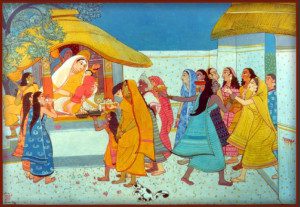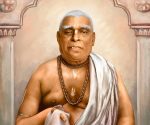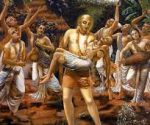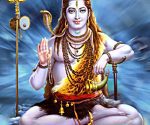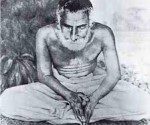The Life of Chaitanya Mahaprabhu
March 27, 2013 (VNN) by Srila Bhakti Bibudha Bodhayan Swami
On March 7, 1486 the land of Bengal was blessed with the appearance of a great luminary. Sri Chaitanya Mahaprabhu, prophesized as the incarnation of divine love by the Vedic scriptures, was born in a Brahmin family in the town of Nabadwip, West Bengal, India. Throughout his life, acquaintances affectionately referred to him by many names, such as Sachinandan, the son of Sachi, his mother. Because his birth took place under a neem tree, he was also lovingly called Nimai, especially during his Childhood and youth. The townspeople knew him as Gauranga, because of his light golden skin and physical beauty. Later in life, upon taking vows of renunciation, he would formally be given the name Chaitanya, and after his reputation as a great saint spread, the honorific title Mahaprabhu (Great Master) was further bestowed upon him.
Chaitanya‟s forefathers came from Sylhet in East Bengal, but had left their ancestral home to come to Nabadwip, which was then a great center of learning. They established the new family home on the banks of the Ganges, where Chaitanya‟s father Jagannath Mishra had been born. Chaitanya‟s Mother Sachi devi was the eldest daughter of another Nabadwip scholar, the astrologer Nilambar Chakravarti. The young couple had eight successive daughters, but none survived childbirth. Finally Sachi‟s ninth child, a boy named Vishwarupa, was born. Twelve years later, Chaitanya followed.
Chaitanya‟s birth corresponded with Krishna‟s spring swing festival, Dol Yatra, which is celebrated on the full moon day between February and March. Vaishnava theologians say that Krishna, who is always absorbed in the love of his precious gopis, accepted the mood and golden hue of the goddess Srimate Radharani and left his beloved Vrindavan to appear in his secret abode of Nabadwip, the hidden Vrindavan. In this incarnation, he flooded the land of Bengal with divine love and brought order back into the land‟s political, judicial and social orders.
Read Full Story >> (PDF format)




